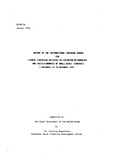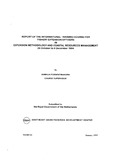Report of the International Training Course for Fishery Extension Officers in Extension Methodology and Fishery Resource Conservation
Share
| dc.contributor.author | Pornpatimakorn, Somnuk | |
| dc.date.accessioned | 2018-03-08T08:13:02Z | |
| dc.date.available | 2018-03-08T08:13:02Z | |
| dc.date.issued | 1994-01 | |
| dc.identifier.uri | http://hdl.handle.net/20.500.12067/291 | |
| dc.description.abstract | The primary aim of fisheries extension is to assist depressed groups of small-scale fisherfolks. One way of doing this is to strengthen then extension service systems which are designed to transfer technology to the fishermen and also raise their socio-economic status and living conditions. It is evident that at present most extension service systems are inadequate and need to be improved. In order to upgrade these regional systems, several problems have to be overcome. One such problem is that officers employed for this task lack the skills to communicate, disseminate and demonstrate the necessary information. This situation would be improved if training were given in communication and dissemination techniques, and extension methodology. The Training Department of the Southeast Asian Fisheries Development Center has conducted regional training programs for fishery extension officers with the assistance of the Royal Netherlands Government under the DSO program since 1981. The training programs have so far produced some 298 trained personnel efficient in fishery extension methodology from eleven different countries in Southeast Asia, South Asia and Africa. | en |
| dc.language.iso | en | en |
| dc.publisher | The Royal Government of the Netherlands | en |
| dc.subject | Resources conservation | en |
| dc.subject | extension | en |
| dc.subject | reports | en |
| dc.title | Report of the International Training Course for Fishery Extension Officers in Extension Methodology and Fishery Resource Conservation | en |




